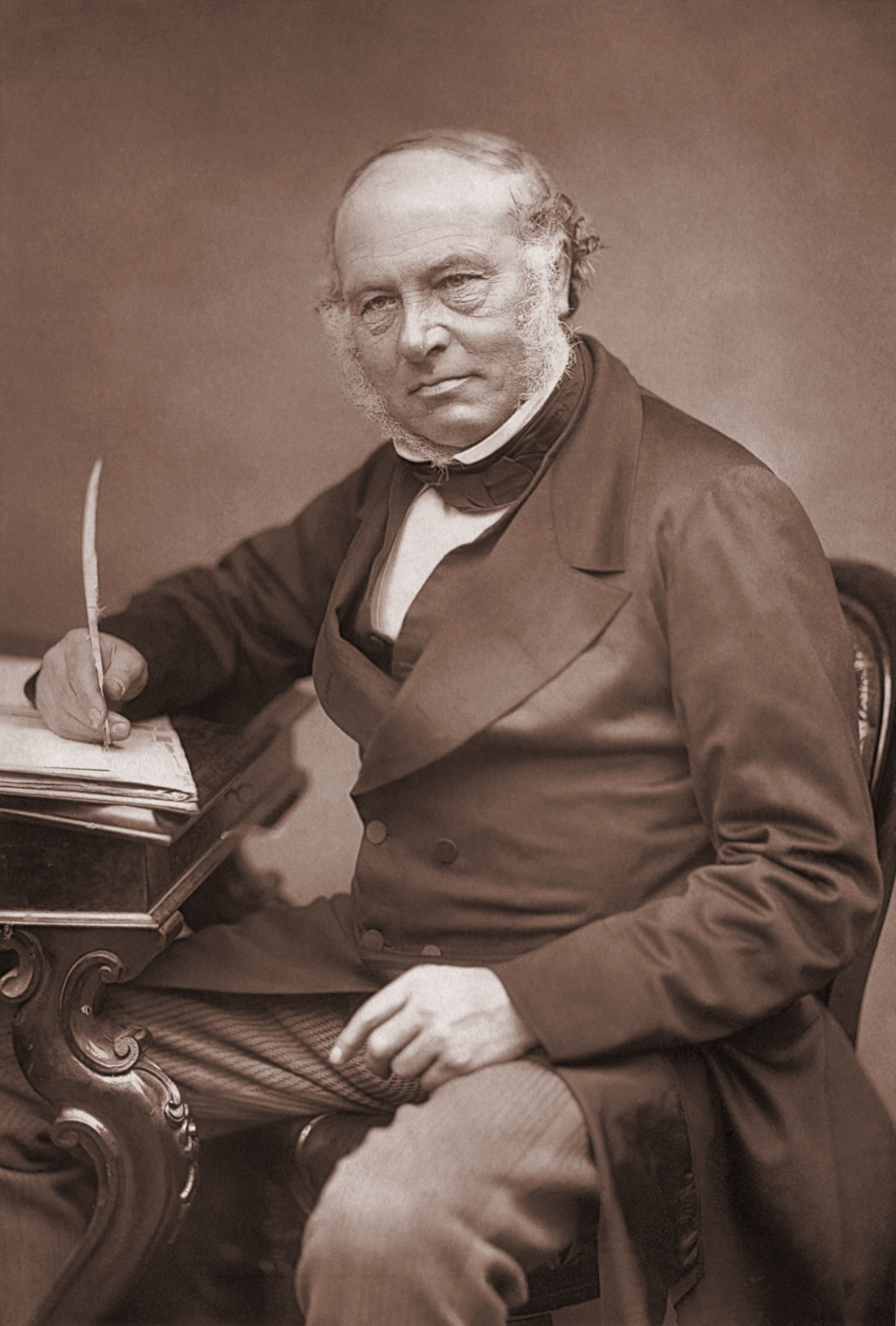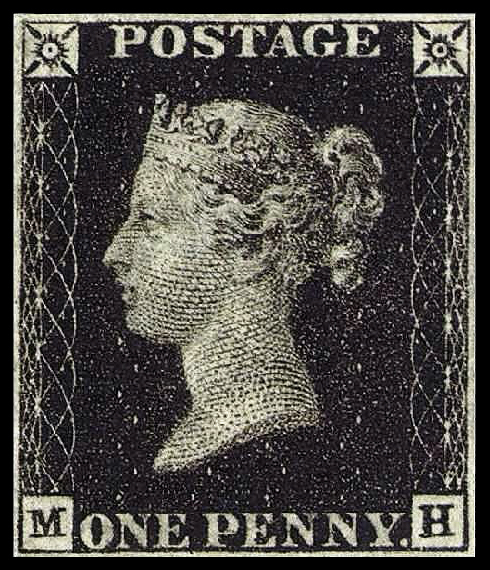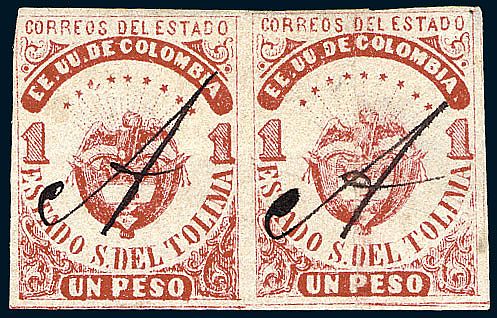|
Lady McLeod
The ''Lady McLeod'' was a paddle steamer and a private local post. The ship sailed regularly between Port of Spain and San Fernando, on Trinidad island, now in Trinidad and Tobago from the end of 1845 until 1854. The private local post ran during the same time with the use of postage stamps on its mail from April 1847. History Coming from the Napier shipyard in Glasgow, Mackay, James. "Her ladyship's ship". ''Stamp Magazine'' #73-10: October 2007, page 59. the ship was christened in hommage of the Governor Sir Henry McLeod's wife and began its Port of Spain–San Fernando route in November 1845.Courtney, Nicholas (2004). ''The Queen's Stamps'', page 49. The 60-ton, 40 hp, steamer was bought by Turnbull, Stewart & Co. In 1846, David Bryce bought it and let it some years later to a San Fernando consortium.Courtney, Nicholas (2004). ''The Queen's Stamps'', page 50. At the beginning of the 1850s, the postal monopoly ended and American and Netherlands ships entered the competi ... [...More Info...] [...Related Items...] OR: [Wikipedia] [Google] [Baidu] |
1847 5c Lady McLeod
Events January–March * January 4 – Samuel Colt sells his first revolver pistol to the U.S. government. * January 13 – The Treaty of Cahuenga ends fighting in the Mexican–American War in California. * January 16 – John C. Frémont is appointed Governor of the new California Territory. * January 17 – St. Anthony Hall fraternity is founded at Columbia University, New York City. * January 30 – Yerba Buena, California, is renamed San Francisco. * February 5 – A rescue effort, called the First Relief, leaves Johnson's Ranch to save the ill-fated Donner Party (California-bound emigrants who became snowbound in the Sierra Nevada earlier this winter; some have resorted to survival by cannibalism). * February 22 – Mexican–American War: Battle of Buena Vista – 5,000 American troops under General Zachary Taylor use their superiority in artillery to drive off 15,000 Mexican troops under Antonio López de Santa Anna, defeating the Mexicans the next day. * February 25 ... [...More Info...] [...Related Items...] OR: [Wikipedia] [Google] [Baidu] |
Postage Stamp
A postage stamp is a small piece of paper issued by a post office, postal administration, or other authorized vendors to customers who pay postage (the cost involved in moving, insuring, or registering mail), who then affix the stamp to the face or address-side of any item of mail—an envelope or other postal cover (e.g., packet, box, mailing cylinder)—that they wish to send. The item is then processed by the postal system, where a postmark or cancellation mark—in modern usage indicating date and point of origin of mailing—is applied to the stamp and its left and right sides to prevent its reuse. The item is then delivered to its addressee. Always featuring the name of the issuing nation (with the exception of the United Kingdom), a denomination of its value, and often an illustration of persons, events, institutions, or natural realities that symbolize the nation's traditions and values, every stamp is printed on a piece of usually rectangular, but sometimes triangular ... [...More Info...] [...Related Items...] OR: [Wikipedia] [Google] [Baidu] |
Postage Stamps
A postage stamp is a small piece of paper issued by a post office, postal administration, or other authorized vendors to customers who pay postage (the cost involved in moving, insuring, or registering mail), who then affix the stamp to the face or address-side of any item of mail—an envelope or other postal cover (e.g., packet, box, mailing cylinder)—that they wish to send. The item is then processed by the postal system, where a postmark or cancellation mark—in modern usage indicating date and point of origin of mailing—is applied to the stamp and its left and right sides to prevent its reuse. The item is then delivered to its addressee. Always featuring the name of the issuing nation (with the exception of the United Kingdom), a denomination of its value, and often an illustration of persons, events, institutions, or natural realities that symbolize the nation's traditions and values, every stamp is printed on a piece of usually rectangular, but sometimes triangular ... [...More Info...] [...Related Items...] OR: [Wikipedia] [Google] [Baidu] |
History Of Trinidad And Tobago
The history of Trinidad and Tobago begins with the settlements of the islands by Indigenous peoples, Indigenous First Peoples. Trinidad was visited by Christopher Columbus on his Voyages of Christopher Columbus, third voyage in 1498, (he never landed in Tobago), and claimed in the name of Spain. Trinidad was administered by Spaniards, Spanish hands until 1797, but it was largely settled by French colonists. Tobago changed hands between the British colonization of the Americas, British, French colonization of the Americas, French, Dutch colonization of the Americas, Dutch, and Courland colonization of the Americas, Courlanders, but eventually ended up in British hands following the second Treaty of Paris (1814). In 1889, the two islands were incorporated into a single political entity. Trinidad and Tobago obtained its independence from the British Empire in 1962 and became a republic in 1976. Pre-Columbian period Human settlement in Trinidad dates back at least 7,000 years. Th ... [...More Info...] [...Related Items...] OR: [Wikipedia] [Google] [Baidu] |
Victorian-era Ships
In the history of the United Kingdom and the British Empire, the Victorian era was the period of Queen Victoria's reign, from 20 June 1837 until her death on 22 January 1901. The era followed the Georgian period and preceded the Edwardian period, and its later half overlaps with the first part of the ''Belle Époque'' era of Continental Europe. There was a strong religious drive for higher moral standards led by the nonconformist churches, such as the Methodists and the evangelical wing of the established Church of England. Ideologically, the Victorian era witnessed resistance to the rationalism that defined the Georgian period, and an increasing turn towards romanticism and even mysticism in religion, social values, and arts. This era saw a staggering amount of technological innovations that proved key to Britain's power and prosperity. Doctors started moving away from tradition and mysticism towards a science-based approach; medicine advanced thanks to the adoption of ... [...More Info...] [...Related Items...] OR: [Wikipedia] [Google] [Baidu] |
Paddle Steamers
A paddle steamer is a steamship or steamboat powered by a steam engine that drives paddle wheels to propel the craft through the water. In antiquity, paddle wheelers followed the development of poles, oars and sails, where the first uses were wheelers driven by animals or humans. In the early 19th century, paddle wheels were the predominant way of propulsion for steam-powered boats. In the late 19th century, paddle propulsion was largely superseded by the propeller, screw propeller and other marine propulsion systems that have a higher efficiency, especially in rough or open water. Paddle wheels continue to be used by small, pedal-powered paddle boats and by some ships that operate tourist voyages. The latter are often powered by diesel engines. Paddle wheels The paddle wheel is a large steel framework wheel. The outer edge of the wheel is fitted with numerous, regularly spaced paddle blades (called floats or buckets). The bottom quarter or so of the wheel travels under wat ... [...More Info...] [...Related Items...] OR: [Wikipedia] [Google] [Baidu] |
George V Of The United Kingdom
George V (George Frederick Ernest Albert; 3 June 1865 – 20 January 1936) was King of the United Kingdom and the British Dominions, and Emperor of India, from 6 May 1910 until his death in 1936. Born during the reign of his grandmother Queen Victoria, George was the second son of Albert Edward, Prince of Wales, and was third in the line of succession to the British throne behind his father and his elder brother, Prince Albert Victor. From 1877 to 1892, George served in the Royal Navy, until the unexpected death of his elder brother in early 1892 put him directly in line for the throne. On Victoria's death in 1901, George's father ascended the throne as Edward VII, and George was created Prince of Wales. He became king-emperor on his father's death in 1910. George's reign saw the rise of socialism, communism, fascism, Irish republicanism, and the Indian independence movement, all of which radically changed the political landscape of the British Empire, which itself reache ... [...More Info...] [...Related Items...] OR: [Wikipedia] [Google] [Baidu] |
Royal Philatelic Collection
The Royal Philatelic Collection is the postage stamp collection of the British royal family. It is the most comprehensive collection of items related to the philately of the United Kingdom and the British Commonwealth, with many unique pieces. Of major items, only the British Guiana 1c magenta is missing from the collection of British Imperial stamps. In 2020, the value of the collection was estimated by ''The Daily Telegraph'' to be £100 million. Early history Some members of the royal family are known to have been collecting stamps by 1864, just under twenty-five years after their introduction in 1840. The first serious collector in the family was Prince Alfred, who sold his collection to his older brother Edward VII, who in turn gave it to his son, later George V. George V George V was one of the notable philatelists of his day. In 1893, as the Duke of York, he was elected honorary vice-president of what became the Royal Philatelic Society of London. On his marriage ... [...More Info...] [...Related Items...] OR: [Wikipedia] [Google] [Baidu] |
Postage Stamps And Postal History Of Trinidad And Tobago
This is a survey of the postage stamps and postal history of Trinidad and Tobago. Trinidad and Tobago lies northeast of Venezuela and south of Grenada in the Lesser Antilles. Trinidad and Tobago was a Spanish colony from the times of Christopher Columbus to 1802, when it was ceded to Britain. The country obtained independence in 1962. Lady McLeod stamps The first stamps of Trinidad were the famous Lady McLeod, a private local post, stamps of 1847. First Trinidad stamps The first definitives for Trinidad were issued in 1851. Tobago stamps Tobago used stamps of Trinidad from 1860. Stamps of Tobago were not issued until 1879.''Stanley Gibbons Stamp Catalogue: Commonwealth and British Empire Stamps 1840-1970''. 110th edition. London: Stanley Gibbons, 2008, pp.588-594. Tobago again used stamps of Trinidad from 1896. Trinidad and Tobago issues Stamps inscribed "Trinidad & Tobago" were first issued in 1913 after the integration of the postal administrations of Trinidad a ... [...More Info...] [...Related Items...] OR: [Wikipedia] [Google] [Baidu] |
Henry Corbould
Henry Corbould (1787–1844) was an English artist. Life The third son of Richard Corbould, he was born in London. He studied painting with his father, and was at an early age admitted as a student of the Royal Academy, under Fuseli, where he gained the silver medal for a study from the life. While at the Academy he made the friendship of Flaxman, Stothard, West, Chantrey, and Westmacott. He several times sat as a model to West in whose picture of 'Christ Rejected' his head was painted for that of St. John; as also in that of 'Christ Healing the Sick in the Temple,' in the National Gallery. In 1808 he exhibited a painting of 'Coriolanus'; in the following year 'The Parting of Hector and Andromache,' and 'Thetis comforting Achilles,' &c.; but his name has been comparatively little before the public except as a designer for books, his time having been almost entirely occupied in making drawings from ancient marbles in the possession of various English noblemen. Those of the Wo ... [...More Info...] [...Related Items...] OR: [Wikipedia] [Google] [Baidu] |
Britannia
Britannia () is the national personification of Britain as a helmeted female warrior holding a trident and shield. An image first used in classical antiquity, the Latin ''Britannia'' was the name variously applied to the British Isles, Great Britain, and the Roman province of Britain during the Roman Empire. Typically depicted reclining or seated with spear and shield since appearing thus on Roman coins of the 2nd century AD, the classical national allegory was revived in the early modern period. On coins of the pound sterling issued by Charles II of England, Scotland, and Ireland, Britannia appears with her shield bearing the Union Flag. To symbolise the Royal Navy's victories, Britannia's spear became the characteristic trident in 1797, and a helmet was added to the coinage in 1825. By the 1st century BC, Britannia replaced Albion as the prevalent Latin name for the island of Great Britain. After the Roman conquest in 43 AD, ''Britannia'' also came to refer to the Roman ... [...More Info...] [...Related Items...] OR: [Wikipedia] [Google] [Baidu] |
Pen Cancel
A pen cancel on a Russian postage stamp. In philately, a pen cancel – symbol – is a cancellation of a postage or revenue stamp by the use of a pen, marker or crayon. Usage In the early days of stamps, cancellation with a pen was common. Today stamps are almost always cancelled with an inked handstamp or a machine cancel as this is quicker to apply. Pen cancels are still sometimes seen today when a postal official needs to cancel stamps missed by the automatic cancelling machine. There are no fixed terms for the different types of pen cancels, but a cancel in the form of two crossed lines has been referred to as an ''X cancel''. Pen cancels may also take the form of notations by the canceller, the city in which the item was posted or the initials of the local postmaster. A pen cancel may indicate fiscal (revenue) use; however, in the early days of stamps a pen cancel was sometimes used because no handstamp was available, for instance in Nicaragua where pen canc ... [...More Info...] [...Related Items...] OR: [Wikipedia] [Google] [Baidu] |










